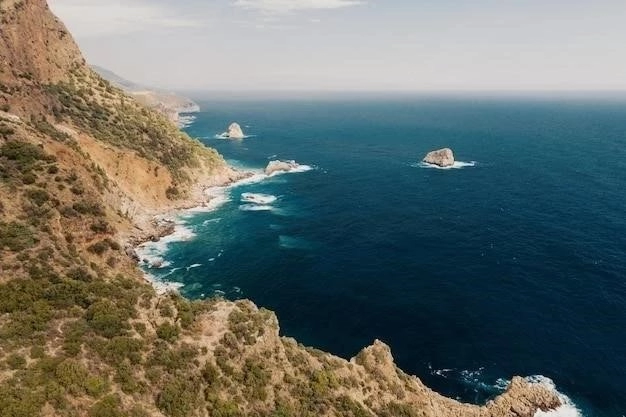Nestled amidst the chilly, turbulent waters of San Francisco Bay lies Alcatraz Island, a place etched in history and lore․ More than just a geographical landmark, Alcatraz stands as a testament to changing times, serving as a military fortress, a notorious federal penitentiary, and now, a captivating tourist destination․ This article delves into the multifaceted history of Alcatraz, exploring its transformation through the ages․

Early Years: From Spanish Discovery to Military Fortification
The islands story begins in 1775 when Spanish explorer Juan Manuel de Ayala charted the San Francisco Bay, christening the barren rock “La Isla de los Alcatraces,” meaning “The Island of the Pelicans․” This name alluded to the abundance of seabirds inhabiting the island․ In 1850, following the U․S․ acquisition of California during the Mexican-American War, the island was officially designated as a U․S․ military reservation․
Recognizing its strategic location, the U․S․ Army established Fort Alcatraz in 1853, transforming the island into a formidable defense outpost․ The fort, outfitted with over 100 cannons, served to protect the burgeoning city of San Francisco during the turbulent years of the California Gold Rush․
The Birth of a Penitentiary: From Military Prison to Federal Control
The seeds of Alcatrazs future as a high-security prison were sown in 1861 when it began housing Civil War prisoners of war․ This marked the beginning of the islands association with incarceration, a legacy that would only deepen in the decades to come; In 1909, the army formally designated the island as a military prison, housing those who committed offenses within their ranks․
The year 1934 marked a pivotal shift in Alcatrazs history․ As the Great Depression swept the nation, organized crime surged, posing a significant challenge to law enforcement․ To combat this, the Federal Bureau of Prisons, under the leadership of J․ Edgar Hoover, sought to establish a maximum-security prison for the nations most incorrigible criminals․ Alcatraz, with its isolated location and reputation for impregnability, presented the ideal setting for this daunting task․

The Rock: Alcatraz as a Federal Penitentiary (1934-1963)
For 29 years٫ Alcatraz operated as a federal penitentiary٫ housing some of the most notorious criminals in American history․ Names like Al Capone٫ George “Machine Gun” Kelly٫ and Robert Stroud٫ the “Birdman of Alcatraz٫” became synonymous with the islands formidable reputation․ The prison operated under a strict code of silence٫ and inmates endured harsh conditions٫ including small٫ sparsely furnished cells and limited contact with the outside world․
Despite its fearsome reputation, Alcatraz was not without its share of attempted escapes․ Over its years of operation, there were 14 documented escape attempts involving 36 inmates․ While most attempts were thwarted, the fate of three inmates—Frank Morris, John Anglin, and Clarence Anglin—remains a mystery․ Their elaborate 1962 escape, meticulously planned and executed, continues to fuel speculation and intrigue, cementing Alcatrazs place in popular culture․
Closure and Transformation: A New Chapter for “The Rock”
By the early 1960s, Alcatraz faced mounting challenges․ The prisons harsh conditions and exorbitant operating costs, coupled with the aging infrastructure, led to its closure on March 21, 1963․ The once-feared island prison fell silent, leaving behind a legacy steeped in both notoriety and fascination․
However, Alcatrazs story did not end there․ Following its closure, the island became a focal point for Native American activism․ In 1969, a group of Native American activists, known as the Indians of All Tribes, occupied the island for 19 months, claiming it under the Fort Laramie Treaty of 1868․ This occupation, while ultimately unsuccessful in reclaiming the land, brought national attention to Native American issues and spurred a renewed focus on indigenous rights․
Alcatraz Today: A National Park and Cultural Icon
In 1972, Alcatraz Island became part of the newly established Golden Gate National Recreation Area․ Today, the island stands as a popular tourist destination, attracting over 1․4 million visitors annually․ Visitors can explore the remnants of the prison, including the cell blocks, dining hall, and recreation yard, gaining a glimpse into the austere lives led by those incarcerated within its walls․
The island also offers breathtaking views of the San Francisco skyline, the Golden Gate Bridge, and the surrounding bay․ Moreover, Alcatraz has become a haven for wildlife, with thriving populations of birds, including Brandts cormorants, western gulls, and black-crowned night herons․

Conclusion: A Legacy of Contradictions and Enduring Intrigue
Alcatraz Island stands as a powerful symbol of American history, embodying themes of punishment, redemption, and the enduring human spirit․ From its days as a military fortress to its notoriety as a federal penitentiary, the island has witnessed dramatic transformations, reflecting broader societal shifts and evolving attitudes toward incarceration․ Today, Alcatraz serves as a poignant reminder of the past, a platform for reflection, and a testament to the power of place to captivate the imagination․

Alcatraz Island: Beyond the Prison Walls
While the image of Alcatraz as a forbidding prison endures, the islands story transcends its penal past․ The site stands as a layered historical tapestry, interwoven with narratives of military strategy, indigenous resistance, and evolving perspectives on incarceration and social justice․
A Microcosm of American Military History
Alcatrazs strategic importance in the defense of San Francisco Bay predates its prison era․ Its initial fortification in the mid-19th century coincided with a period of significant expansion and vulnerability for the burgeoning United States․ The California Gold Rush, while economically prosperous, fueled rapid population growth and social tensions, necessitating robust coastal defenses․ Alcatraz, with its commanding views and natural defenses, became a crucial asset, safeguarding the burgeoning metropolis from potential maritime threats․
The islands role evolved alongside American military history․ Its function as a military prison, housing Confederate sympathizers during the Civil War and later, soldiers convicted of crimes during peacetime, reflects the nations internal conflicts and evolving military justice system․ Studying Alcatraz through this lens provides valuable insights into the complexities of American military history and the changing dynamics between military authority and individual rights․
A Touchstone for Native American Activism
The occupation of Alcatraz Island by the Indians of All Tribes marked a pivotal moment in the Red Power movement․ Claiming the island as rightfully theirs under the Fort Laramie Treaty, the activists shone a spotlight on the U․S․ governments historical mistreatment of Native Americans and ongoing injustices․ Though lasting only 19 months٫ the occupation reverberated far beyond the islands shores․ It galvanized Indigenous communities across the nation٫ sparking a wave of activism that demanded self-determination٫ treaty adherence٫ and cultural revitalization․
Alcatrazs role as a platform for Indigenous resistance transcended the occupation․ The islands very existence as a symbol of confinement resonated with the historical trauma experienced by Native Americans subjected to forced removal, assimilation policies, and cultural genocide․ The reclaiming of Alcatraz, albeit temporary, served as a powerful act of defiance, reclaiming a space of oppression and transforming it into a beacon of hope and resilience․
Alcatraz in the 21st Century: Preservation٫ Interpretation٫ and Dialogue
Today, Alcatraz stands as a site of conscience, prompting reflection on the complexities of American history and the enduring legacy of its past․ The National Park Service faces the challenge of interpreting Alcatraz in a manner that acknowledges its multifaceted history, engaging visitors with nuanced narratives that extend beyond sensationalized accounts of prison life․
Preserving the physical remnants of the prison, while crucial, represents only one facet of this endeavor․ Equally important is the ongoing effort to collect and share the stories of those whose lives intersected with Alcatraz, be they inmates, guards, families, or activists․ Oral histories, archival materials, and collaborative projects with descendant communities play a vital role in enriching our understanding of this complex site․
Alcatrazs transformation from a place of confinement to a site of learning and dialogue underscores the evolving role of historical sites in the 21st century․ No longer static repositories of the past, these spaces have the potential to foster critical engagement with history, prompting us to confront difficult truths, grapple with uncomfortable legacies, and ultimately, build a more just and equitable future․










